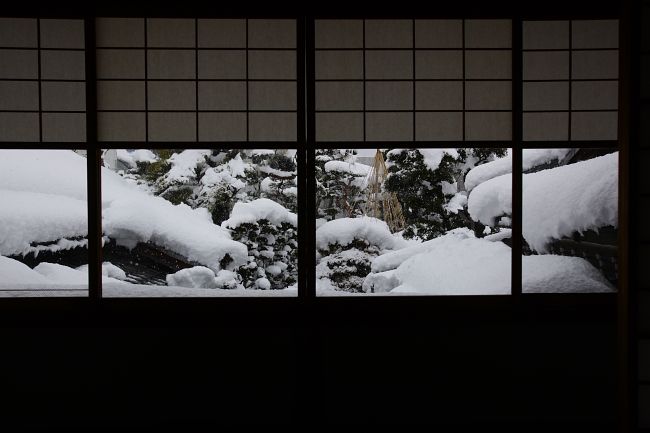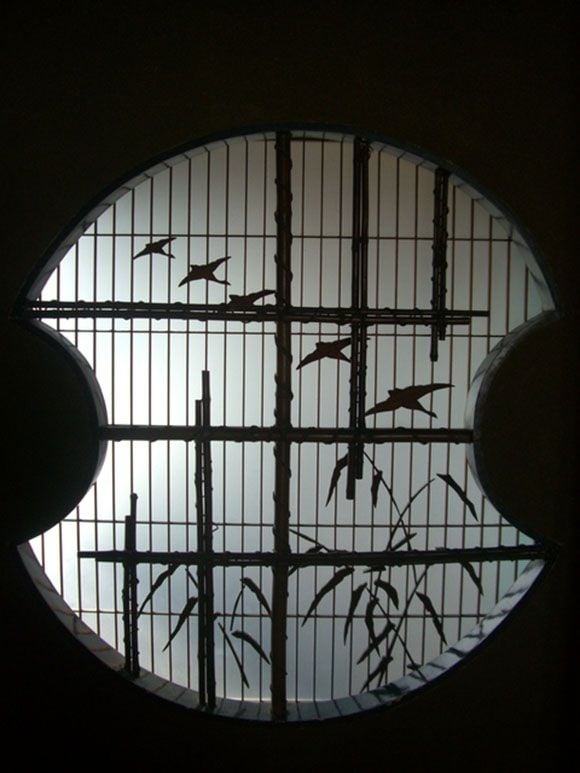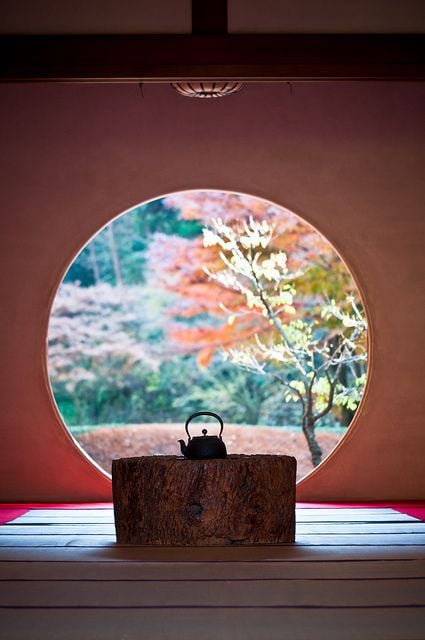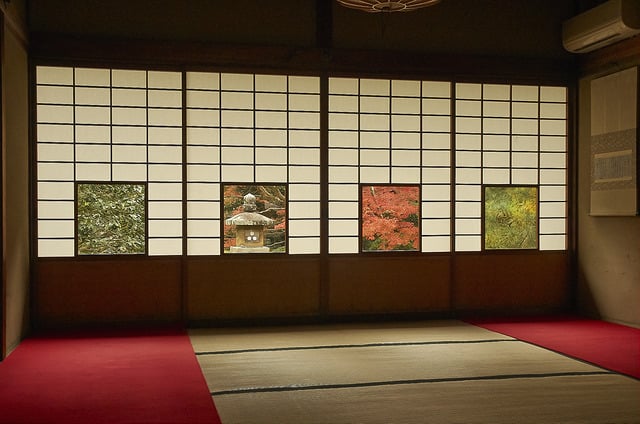Looking at the branches covered with cherry blossoms in spring, the vibrant green of the summer foliage, the golden garden in autumn and the quiet white of winter is how the Japanese enjoy the vibrant natural scenery through the window.
Yukimi Shoji (Snow Window)


Yukimi Shoji is designed to block out part of the sky so that the view of the people sitting inside is closer to the ground. This is a trick to let people focus on the scene of snow falling silently, slowly covering the ground.
Kazari Shoji (Decorative Doors)


This window is used to add artistic value to the house. The decorations will appear when the light from outside shines in.
Tea room window of Meigetu-in, Kamakura.


This type of door helps to minimize the outside space.
Unryu-in, Kyoto

Individual windows divide the landscape into four distinct sections. Each window creates a completely different impression as it is cut out from the overall landscape.
“Window of Spiritual Enlightenment” and “Window of Lost Path”, Genkou-an, Kyoto
The circular window on the left is called the "Window of Spiritual Enlightenment". In Zen Buddhism, the circle represents an image of innocence without prejudice. This window represents the final stage of spiritual enlightenment.

In contrast, the rectangular window is named "The Lost Window". The rectangle represents a person's life. The four corners represent the four inevitable pains in life: birth, old age, sickness, and death.
Ngoc Anh (According to Tsunagujapan)

































